Freedom, just north of hope
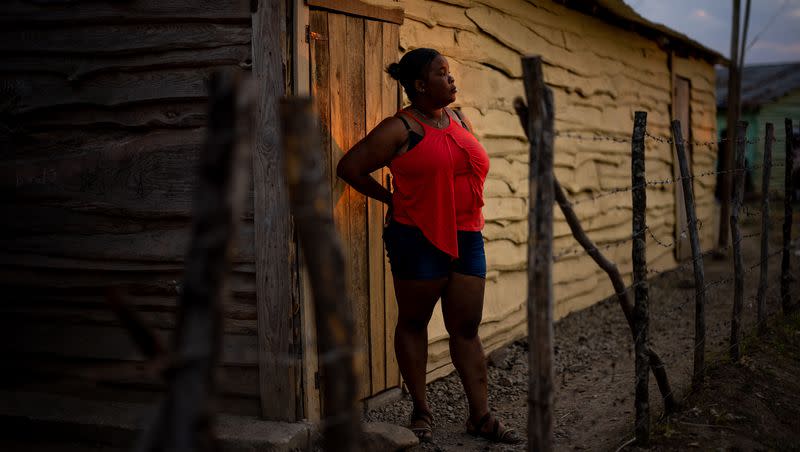
Joseline Geffrard’s thoughts were likely unremarkable as she stood in a Port-au-Prince checkout line in October 2021. She had arrived at an indoor market not far from her house through her usual route, through the Martissant neighborhood, long gripped by violence that now more or less mirrors the whole of Haiti.
She had come to shop for her usual items: perfumes, lotions, soaps and other products for her cosmetics business. The experience had, by that point, proved fairly routine — even tedious. It’s possible she thought of her two children — how they’d been performing at school, whether they’d been up to any trouble. Or what she and her husband would eat for dinner once she made it back. But even when she tries hard to think, she can’t remember what ran through her mind in that line. All she remembers are the guns.
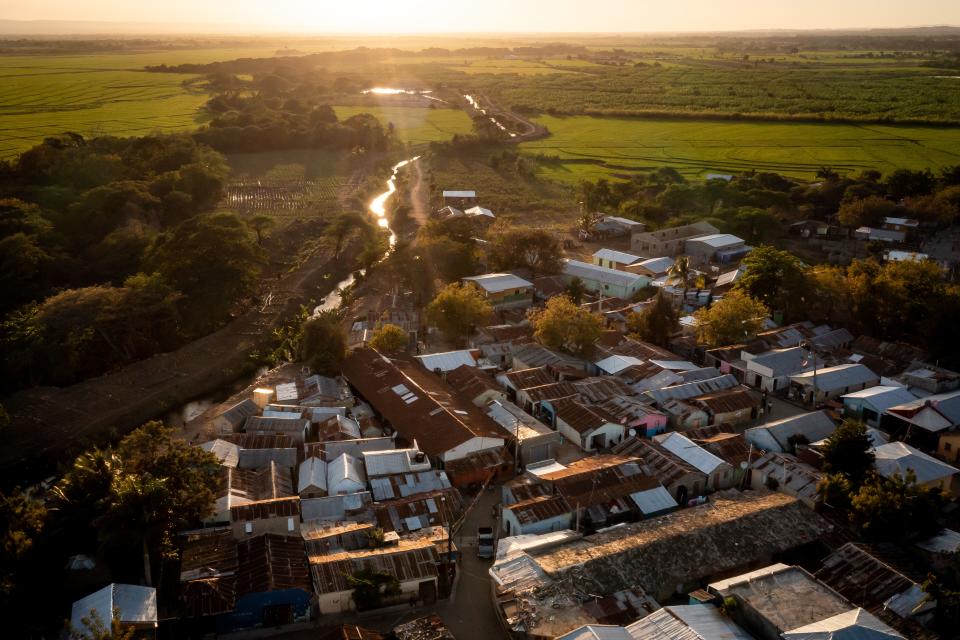
A group of men waving large rifles burst into the market before she was able to reach the register. One by one, they robbed each of the customers waiting in line to pay. Geffrard included. At that moment, face to face with the gang violence she had for years lived on the periphery of, she couldn’t register their faces or how many they were. She was too scared. But once she had gotten away, she remembers clearly what she was thinking. That she could have been killed. That she was her parents’ only daughter. That, if she were kidnapped, her family would be unable to afford her ransom.
A political and humanitarian crisis in Haiti
Now 32, Geffrard had lived in Port-au-Prince for long enough to have seen gang violence take over firsthand. In the early morning hours of July 7, 2021, a group of assassins tortured President Jovenel Moïse and shot him 12 times inside his home. The political vacuum created by the absence of any democratically elected leaders has flung Haiti into an abyss. Gang violence has pushed Haiti near the brink of collapse. UNICEF estimates that four million children will need humanitarian assistance this year, due to famine, disease and physical harm that comes with living in a country under the grip of 200 gangs. The World Food Programme records as many as five million citizens — almost half the population — are food insecure, more than a third of whom face “emergency” levels of hunger.
Related
Cholera, a bacterial disease spread through contaminated water, has emerged in Haiti after more than three years without a case, killing hundreds since last year. The Caribbean nation remains the poorest in the Western Hemisphere and has all but cemented itself as a perpetual work in progress. It suffered a catastrophic earthquake in 2010 that left buildings dilapidated and hundreds of thousands dead. About a decade later, while the country struggled to rebuild, another earthquake wiped away all progress the way a lapping ocean wave erases a name written in sand.
Tens of thousands of Haitians are now fleeing, with most streaming across the border into the Dominican Republic. But the lives many migrants find on the other end of the island aren’t easy, either. Nor is the process of getting there.
Tens of thousands of Haitians are streaming across the border into the Dominican Republic. But the lives they find on the other end of the island aren’t easy.
In the weeks that followed Geffrard’s encounter with gang violence, she couldn’t bring herself to leave her house. The fear became so pervasive that her family encouraged her to flee the country. An uncle lived in Batey Libertad, a housing community about two hours from the border in northwest Dominican Republic, and arranged to have her brought over from Port-au-Prince last April. Migration to the only other country on the island of Hispaniola felt more promising than any alternative — it wouldn’t mean a life-threatening drift over hundreds of miles in a sailboat. But leaving, no matter the destination, still carries the potential of forceful return. The International Organization for Migration estimates about 500 Haitians who escape to the Dominican Republic are sent back every day. Still, she took her chances.
Batey Libertad is located just north of Esperanza, a town that’s Spanish name translates to “hope.” It’s where Geffrard would find migrants with similar stories, all in search of freedom. And it’s where she’d learn that only in the rarest of cases do they find it.
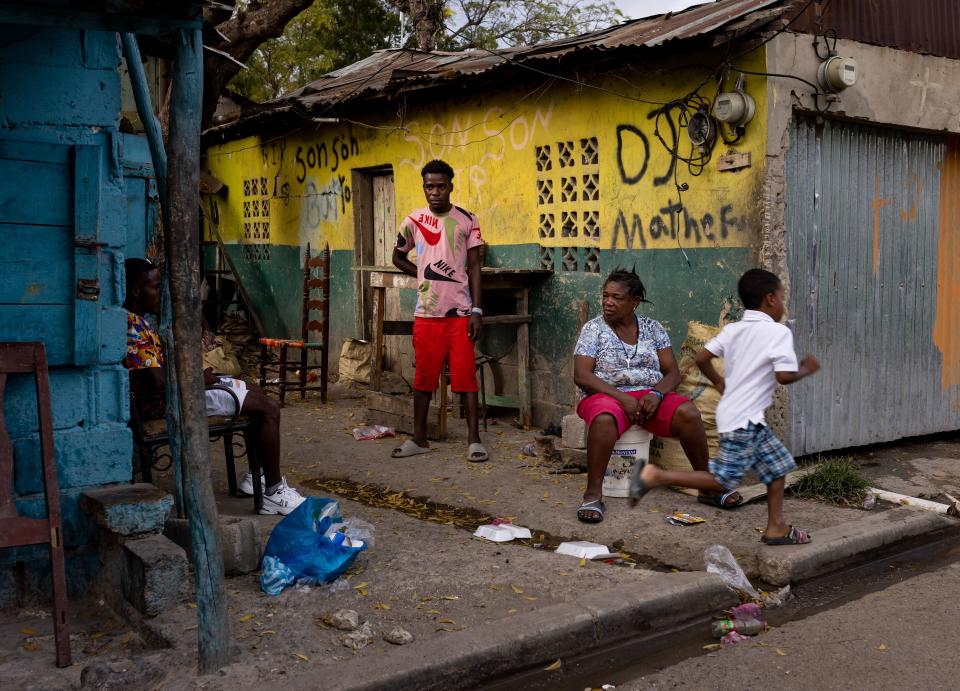
Gang presence in Haiti
Past the peach-painted corner store that blasts merengue from tower speakers, past the lime green church that fills for service on Sunday mornings and the central street where vendors sell fried plantains, Geffrard and her husband live in a wooden home with a tin roof. There are no windows, there’s no air conditioning, and when the afternoon sun sets itself high above the thin metal that shields their heads, they can’t so much as nap in comfort. But it’s not the heat that bothers them. It’s the ever-present threat of military raids.
Since Nov. 30, the neighborhood has been raided three times by Dominican Republic immigration officials, who have ramped up deportations in recent years, from nearly 200,000 last year to more than 20,000 this January alone. Those officials know that one place to find Haitians in the Dominican Republic are bateyes. The loosely structured housing communities are located around sugarcane mills for workers and their families, often Haitians lured across the border by the promise of work. Most bateyes are without access to electricity, clean water, sanitation or health care. Today, hundreds of thousands of people live in bateyes. And though Batey Libertad no longer has ties to a functioning sugar plantation and living conditions for many remain poor, migrants still move there. That’s because it whispers of a promise that life here could be better than braving life back home.
Neighbors leave their front doors wide open. Children run around unattended, unafraid of who they encounter since they’re all familiar faces. Dozens of men gather at a time to play games of dominos so lively that cheers and smacks of tiles against tables can be heard from down the street. The batey might have walkways lined with litter, few places to roam, patches of arid dirt where there should be lush grass, but the only present threat to safety is that of raids. It’s not a place where migrants might feel like they can thrive, but it is where they are sure they can survive. The same cannot be said for Haiti.
Martissant, the Port-au-Prince neighborhood Geffrard often passed through on her way to shop, has become a hotspot where gangs recruit children. Gang presence is in fact so strong that police have chosen to abandon the neighborhood. The Martissant police station now stands deserted, charred by bandits who set fire to the building — a barely standing symbol of the brutality that has taken over the country’s systems of structure. “In Port-au-Prince, 155,000 people are displaced throughout the metropolitan area,” says Philippe Branchat, the chief of mission and head of office in Haiti for the International Organization for Migration. He estimates that 1 in 4 displaced people in the capital are found without shelter and more than 90 percent of displacements are due to violence. “When you are fleeing from violence, it means you lost everything, not only the material stuff you have at home, but also some feeling of being protected.”
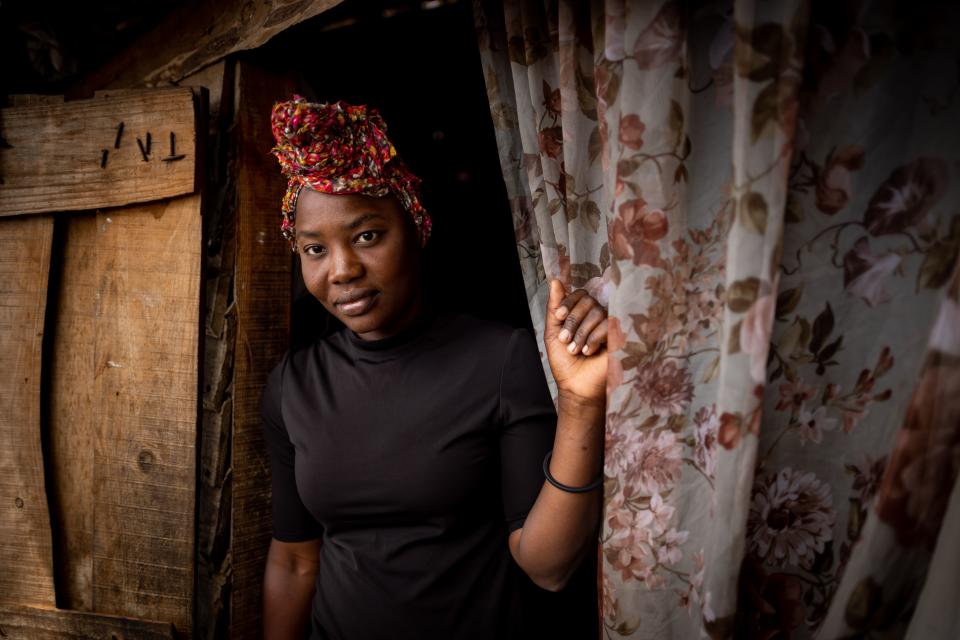
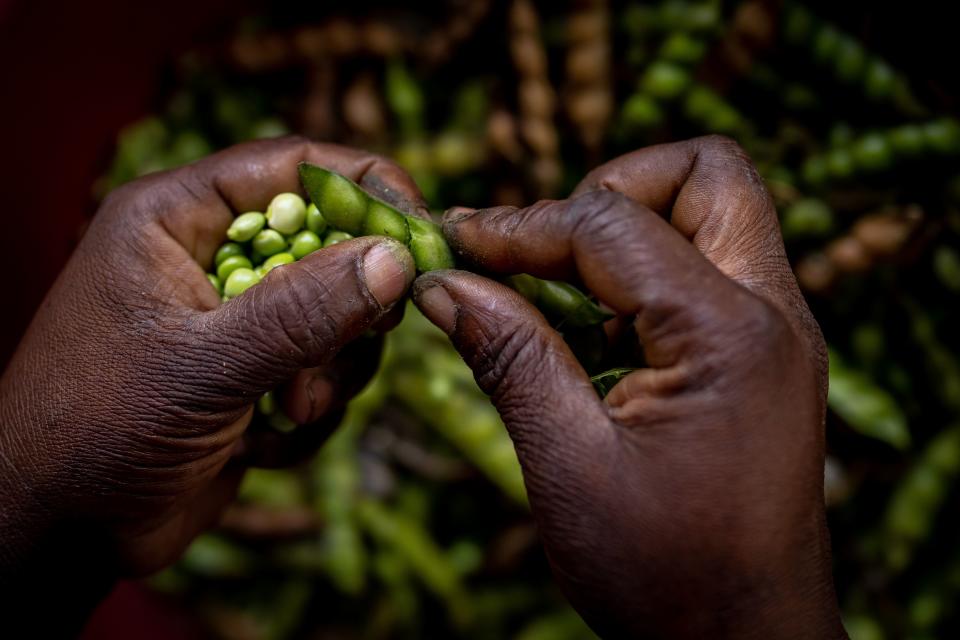
Geffrard already knows how it feels to be stripped of any semblance of safety. From almost 200 miles away, she fears it’s a feeling her children will now have to learn. On her journey to the Dominican Republic, she left behind her son and daughter, now ages 14 and eight, so the two could continue their education and live with their grandparents. But as conditions worsen in Haiti, all Geffrard can do now is wait each day by the phone for her family to call — when there’s enough power in Port-au-Prince to make a call, that is.
On the last day before Geffrard left for Batey Libertad, she remembers sitting her youngest child on her lap to pepper with motherly advice: “Be good,” and “Listen to your grandmother.” She remembers playing cards with her oldest. How they each asked for one last home-cooked meal. Rice and beans. Legim, a Haitian eggplant and meat stew. Papaya milkshakes. After what would be their final family feast for an indeterminate amount of time, Geffrard fried up some plantains to leave behind. She hoped the extra food could help them feel as though she were still there, at least as long as the leftovers lingered. But based on all the uncertainties — including whether foreign troops will intervene, let alone when — she’s realized there was no amount of plantains she could have prepared to last long enough.
“When you are fleeing from violence, it means you lost everything, not only the material stuff you have at home, but also some feeling of being protected.”
Haitians in the Dominican Republic
In a floral tank top that reads “For the dreamers among us, love will inspire your dreams” in English — though unbeknownst to Geffrard — she sits on a plastic patio chair and waits out the final rays of daylight on a Saturday afternoon. A table in front of her supports a green bucket full of pigeon peas, a tropical legume that grows through the late summer. While not the most lucrative line of work, pigeon peas can be easily harvested and sold from the batey. Farmers use the stalks to feed cattle. Vendors use the beans for various dishes. Most residents of Batey Libertad lean on the plants for income, as well as their own resourcefulness.
Sandra Jean-Mary used to live in Saint-Marc, Haiti, two hours from its capital on the western coast of the island nation. She lived in a quiet mountainside home before moving to Batey Libertad in September 2021. The 28-year-old counted herself as an entrepreneur in Haiti. She took a culinary class to learn how to sell fried foods and sweets. She sold clothing at her local market when demand called for it. She prided herself on her flexibility and her ability to adapt. But when gangs took Port-au-Prince by storm, many of the millions of Haitians who lived in the capital ran to other corners of the country.
Saint-Marc has shed its more quiet reputation since. Robberies and kidnappings shifted from rare to regular. Around the time Moïse was killed, Jean-Mary no longer felt safe navigating her neighborhood at night. Like her, others in the community chose to stay indoors. The cost of food and goods kept rising to the point where eating once a day had become a new normal. She couldn’t count on making any sales or earning any income.
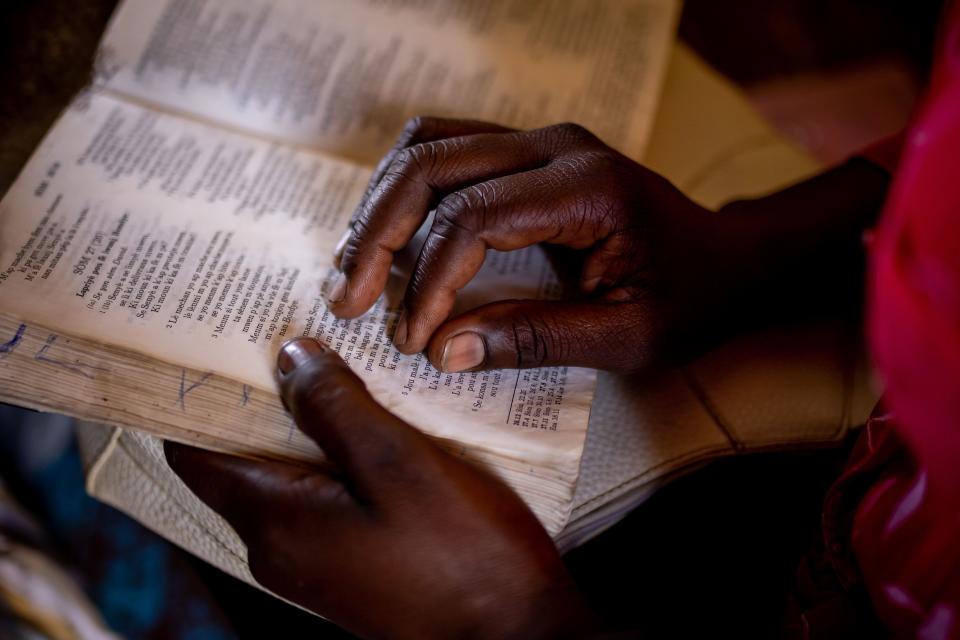
Jean-Mary saved enough money to buy herself a visa and cross the border legally. But when she arrived at Batey Libertad, the cost of renewing her documentation grew too steep. She harvested pigeon peas for Dominican pesos and began selling food in the community every evening. Fried plantains, fried chicken, sweet potatoes, pickled spicy cabbage. Still, she did not earn enough for the monthly travel by both bus and moto-taxi for more than two hours to a checkpoint and back to pay for another stamp in her passport. Her documents expired in June. She now fears deportation, has fewer job prospects and faces a smaller chance of repurchasing another yearlong visa to regain legal status.
When Jean-Mary pits the opportunities she has in Haiti against those available to her in the Dominican Republic, she arrives at a quandary. One nation is collapsing due to violence and doesn’t have much of a job market to offer at the moment. The other has a more stable and successful economy, but does not allow her to formally take part in it.
“Part of the issue is that Haitians are still needed in bottommost jobs in the Dominican Republic. Most agriculture is done by Haitians. Most construction is done by Haitians. And so we’re talking about this needed-but-unwanted syndrome,” says Bridget Wooding, director of the Caribbean Migration and Development Observatory. Jean-Mary says she still imagines a better life for herself than what she can find in Batey Libertad. She has no idea how she’d be able to pay for one, but the hope remains just on the horizon. Though, more uncertain than cost is where that life will be — whether it will ever be back in Haiti. At least as of yet, her home country is not one she feels is worth a return.
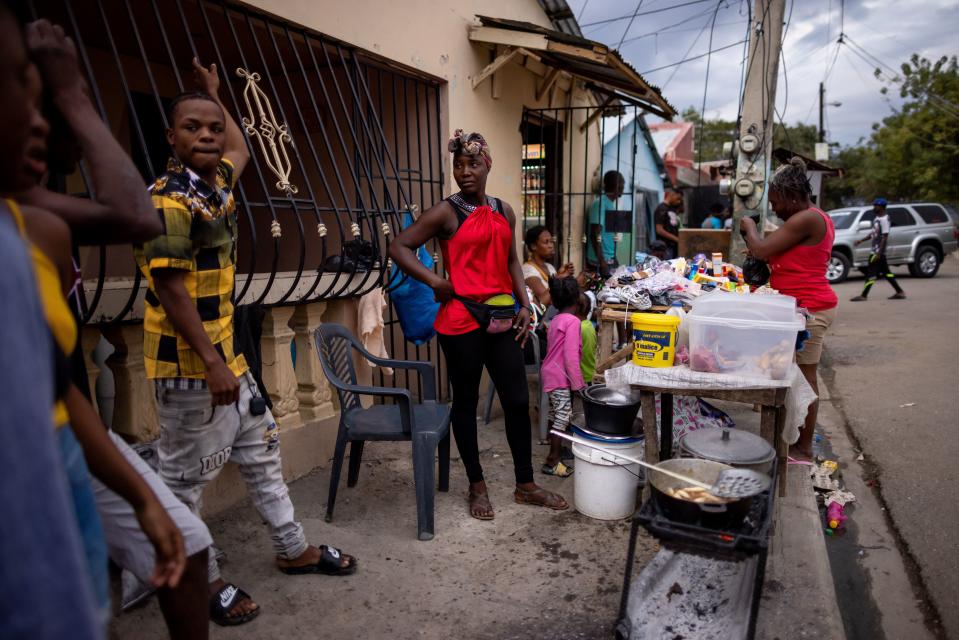
A return to Haiti?
Hours after a crowd files out of church and droves of children chase themselves home under the late morning sun dressed in their Sunday best, the street outside of Batey Libertad’s lime green chapel finds a brief moment of rest. Then, front doors open, music starts to play and Jean-Mary finds herself in front of her food stand. A wooden table lined with white cloth holds up a plastic bin filled with fried food that takes up almost the entire length of the available surface area. She’s got hot pots sitting on plastic paint buckets, a fanny pack she hopes will grow heavier and a smile on her face that would otherwise mask the reality of her whereabouts. Her neighbors line up to grab a bite.
Behind her stand is a narrow alleyway that leads into another side of the batey. There, more homes are stacked on top of one another, wood and tin blocks. Most of the migrants who have fled here, like Geffrard and Jean-Mary, left the comfort of brick-and-mortar houses and are not comfortable in their new residences. In a neighborhood named after freedom, just north of hope, the migrants who move to Batey Libertad symbolize the story of Haiti. One of statelessness. As the country loses its sense of democracy, order and safety, it also loses its people.
“You don’t know what’s gonna happen, even if you have money you don’t feel like you can leave. And if they decide to come and raid your house or take your house, there’s no recourse.”
Though some, like Marie Sonise Zare, are eager to go back. The 48-year-old moved to Batey Libertad last April after fearing for her life on more than one occasion. She brought her nine-year-old son with her across the border to find a better quality of life. But she’s convinced she hasn’t found it yet.
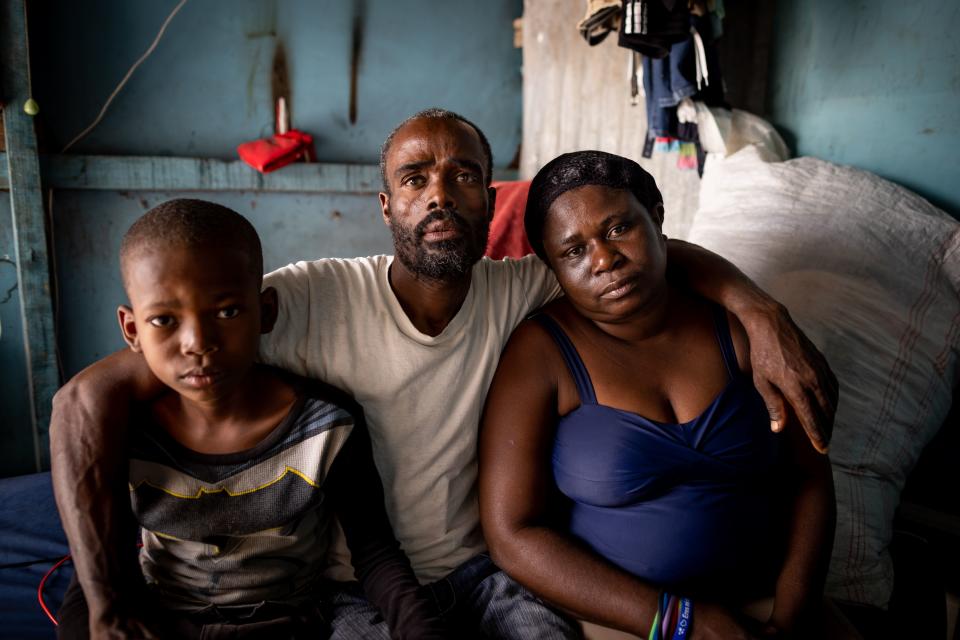
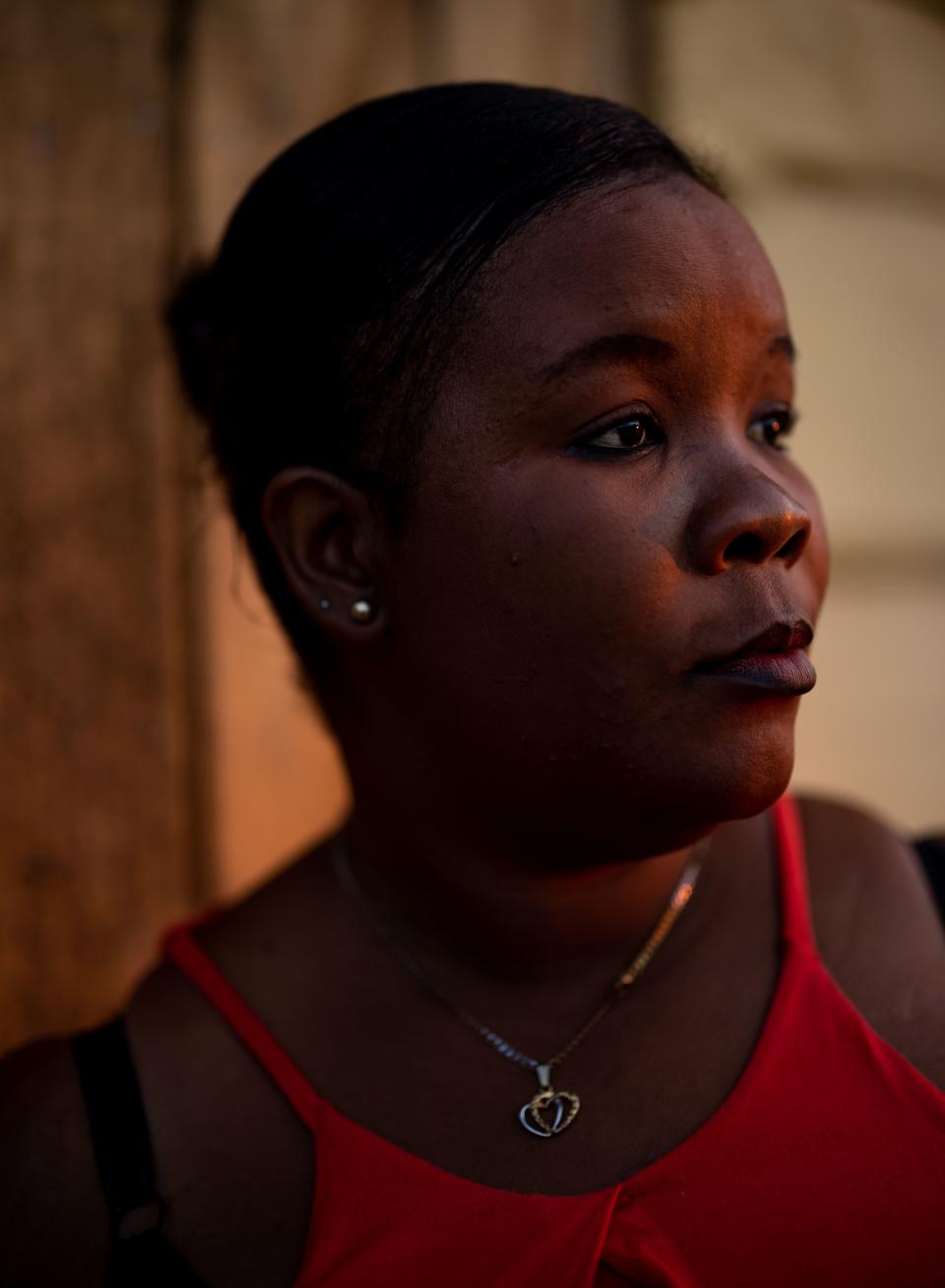
In a windowless cabin behind the narrow alleyway near Jean-Mary’s food stand, Zare lives with her son and her husband. Her nine-year-old entertains himself most days by playing soccer with the neighborhood kids, and her husband keeps himself busy by fixing everything in sight: an inverter, a car radio, a refrigerator. He’s even trying to build a bathroom for the family to use in lieu of the latrines. Zare, though, has remained restless for the entire year she’s been here.
If it weren’t for the videos she watches every day of gang murders and kidnappings in her home country, she says she would have already left. She misses her two-bedroom house and her other three kids and granddaughter whom she left back in Haiti. And she fears the raids. “You don’t know what’s gonna happen, even if you have money you don’t feel like you can leave,” she says. “And if they decide to come and raid your house or take your house, there’s no recourse. There’s nothing that you can do.”
By her son’s mattress, Zare keeps a bag as tall as her packed with clothing. She started assembling it in January and leaves it full, untouched, for the day she works up the nerve to go back to her home country with her son. She planned to depart one week in March but was dissuaded by more news of brutality. So she keeps checking videos online for a green light, a moment of calm. And she keeps the bag packed. It’s how she maintains her hope in a healed Haiti — the same way Jean-Mary cooks food that reminds her of her homeland and Geffrard waits by the phone to hear her children’s voices. In a way, that’s all the migrants can do in Batey Libertad. Wait.
This story appears in the May issue of Deseret Magazine. Learn more about how to subscribe.

